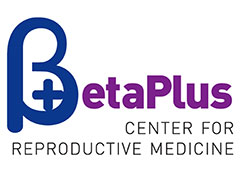Today one of the most important reasons of infertility is a woman’s age. A woman is born with a predetermined number of eggs / oocytes (6-7 million). From birth, the number is on the decline and new oocytes cannot be produced. A calculation shows that for every ovulation, approximately 400 in a woman’s life, 2000 eggs are spent on a continuous selection for a dominant egg. In every natural menstrual cycle about 30 follicles and eggs begin their maturation process. Only one of them is chosen for ovulation while the rest wither and go into atresia. If a woman is over 38 or 40 years of age, the egg pool is depleted, and the selection is tougher. Eggs that have remained, however, have degenerative chromosome changes and aneuploidy in 50-80% cases, which is the main reason for rather frequent miscarriages at this age.
However, today’s IVF principles provide better chances for pregnancies in women of 40 years of age if their ovarian reserve is sufficient. The success of IVF in older women depends on follicular ovarian reserve. Recently this reserve has been determined by measuring AMH (Anti-Müllerian hormone) levels in blood, which provides more accurate picture of ovarian reserve than measuring levels of FSH, estradiol and inhibin in blood. Ultrasound can also determine the number of antral follicles (AFC – antral follicle count).
Postponing pregnancies, aging and ever growing possibilities of damaging reproductive system of both men and women permanently diminish chances of normal pregnancies. Perfect time for deliveries for women are their 20s, while in their 30s pregnancy is still viable but also associated with more complications. In their 40s normal pregnancies and deliveries of healthy children are more an exception than a rule. In big medical centers women in their 40s, even though their hormonal status may be normal, are advised to use donor eggs which provides them with real chances of pregnancy. IVF for women of 45 years of age with their own eggs is not an option, as chances of delivering a healthy child are below 1%.




